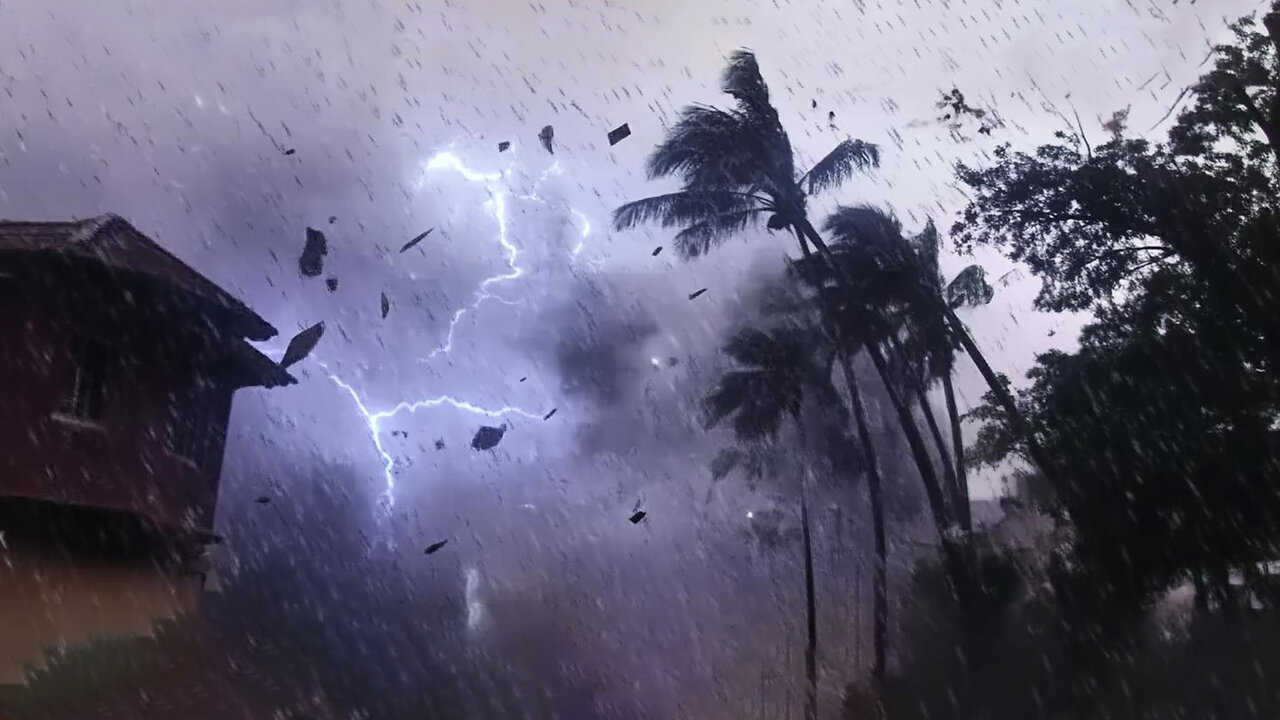Premium Only Content

India NOW! Tropical Cyclone Dana: 3.6 Million Affected in Odisha and West Bengal!
Tropical Cyclone Dana hit the eastern coast of India, bringing gale-force winds with gusts up to seventy-five miles per hour and torrential rains. According to the India Meteorological Department, the cyclone made landfall on Friday, October 25, in the state of Odisha.
Nearly three million six hundred thousand people across fourteen districts in Odisha were affected, with the worst damage in the districts of Kendrapara, Bhadrak, Balasore, Jajpur, and Mayurbhanj. Schools were closed in the affected regions, and over two hundred trains were canceled.
In Balasore district, water levels in the Budhabalang River rose above warning marks, submerging more than twenty villages.
To prevent loss of life, Odisha authorities preemptively evacuated around eight hundred nine thousand people, placing them in over six thousand relief centers.
Odisha Chief Minister Mohan Charan Majhi reported no fatalities so far, saying the state has successfully carried out its “zero-casualty mission.”
However, in the neighboring state of West Bengal, four people lost their lives due to the cyclone. Heavy rains in the state capital, Kolkata, flooded agricultural lands, damaging crops like rice and potatoes in the districts of Hooghly, Bankura, Jhargram, Purba, and Paschim Medinipur.
The cyclone caused extensive damage in Odisha and West Bengal, disrupting infrastructure, snapping power lines, and uprooting trees.
In recent years, disasters have grown in scale and duration, attributed to a mix of the region’s hydrological and climatic conditions, as well as a lack of effective river management. Yet, the main driver behind the rising frequency and intensity of floods is the increasing atmospheric humidity, linked to the abnormal warming of the ocean.
Scientists have already developed technology capable of effectively reducing atmospheric humidity and clearing oceans of microplastics, restoring their natural role as the planet’s cooling system. These measures could help lessen the impact of extreme weather events like heavy rains, storms, and hurricanes.
Additionally, this technology could provide an unlimited supply of clean water to those in need. It sounds like science fiction, but it’s entirely achievable on a global scale in the near future — if humanity has the resolve to make it happen.
Find out more in the documentary “Water From Air: The Path to Saving Humanity.”
-
 27:01
27:01
AllatRa TV
3 days agoEgon Cholakian: A Brief Analysis of the Climate Situation
762 -
 8:08
8:08
Guns & Gadgets 2nd Amendment News
2 days ago16 States Join Forces To Sue Firearm Manufacturers Out of Business - 1st Target = GLOCK
91K86 -
 10:17
10:17
Dermatologist Dr. Dustin Portela
2 days ago $17.45 earnedOlay Cleansing Melts: Dermatologist's Honest Review
132K14 -
 1:02:20
1:02:20
Trumpet Daily
2 days ago $41.37 earnedObama’s Fake World Comes Crashing Down - Trumpet Daily | Dec. 20, 2024
89.9K59 -
 6:29
6:29
BIG NEM
1 day agoCultivating God Mode: Ancient Taoist NoFap Practices
66.6K17 -
 30:53
30:53
Uncommon Sense In Current Times
2 days ago $10.87 earned"Pardon or Peril? How Biden’s Clemency Actions Could Backfire"
80.7K5 -
 40:01
40:01
CarlCrusher
1 day agoSkinwalker Encounters in the Haunted Canyons of Magic Mesa - ep 4
74.7K9 -
 59:44
59:44
PMG
2 days ago $10.04 earned"BETRAYAL - Johnson's New Spending Bill EXPANDS COVID Plandemic Powers"
76.3K49 -
 6:48:50
6:48:50
Akademiks
1 day agoKendrick Lamar and SZA disses Drake and BIG AK? HOLD UP! Diddy, Durk, JayZ update. Travis Hunter RUN
195K35 -
 11:45:14
11:45:14
Right Side Broadcasting Network
10 days agoLIVE REPLAY: TPUSA's America Fest Conference: Day Three - 12/21/24
378K31